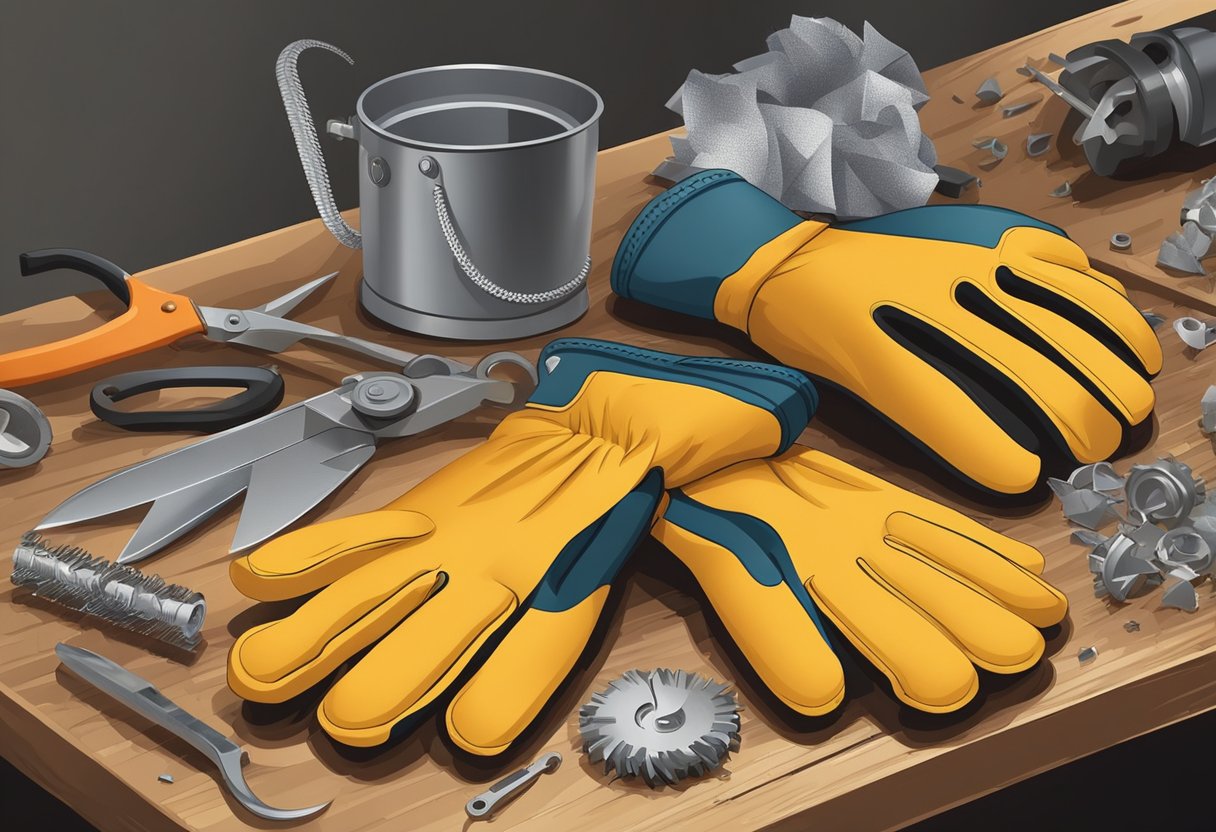A must-have item of PPE is a pair of cut-resistant gloves for individuals working in hazardous environments. They are a crucial defense against cuts and lacerations from handling sharp objects or working with dangerous machinery. At the same time, no glove can provide complete protection against all injuries; cut-resistant gloves on the job lower the risk of employee harm. Knowing the various cut-resistant gloves and how to select the appropriate ones for specific tasks is essential for worker safety.
Stainless steel mesh, Kevlar, and Dyneema are just a few of the materials used to make cut-resistant gloves. The amount of protection that each material provides can vary. When choosing suitable gloves for the job, it’s essential to consider the kind of work task at hand, the required level of cut resistance, and the ideal level of glove comfort and dexterity. Visit our site for more information on Ice Age Tools.
Key Takeaways
- Cut-resistant gloves are an essential PPE for individuals working in hazardous environments.
- The safety of workers depends on their familiarity with the various cut-resistant gloves and their ability to choose suitable gloves for each task.
- When selecting suitable gloves for a task, you should consider factors such as the type of work, such as how much cut resistance you need, how comfortable the gloves are, and how agile they are.
Understanding Cut-Resistant Gloves
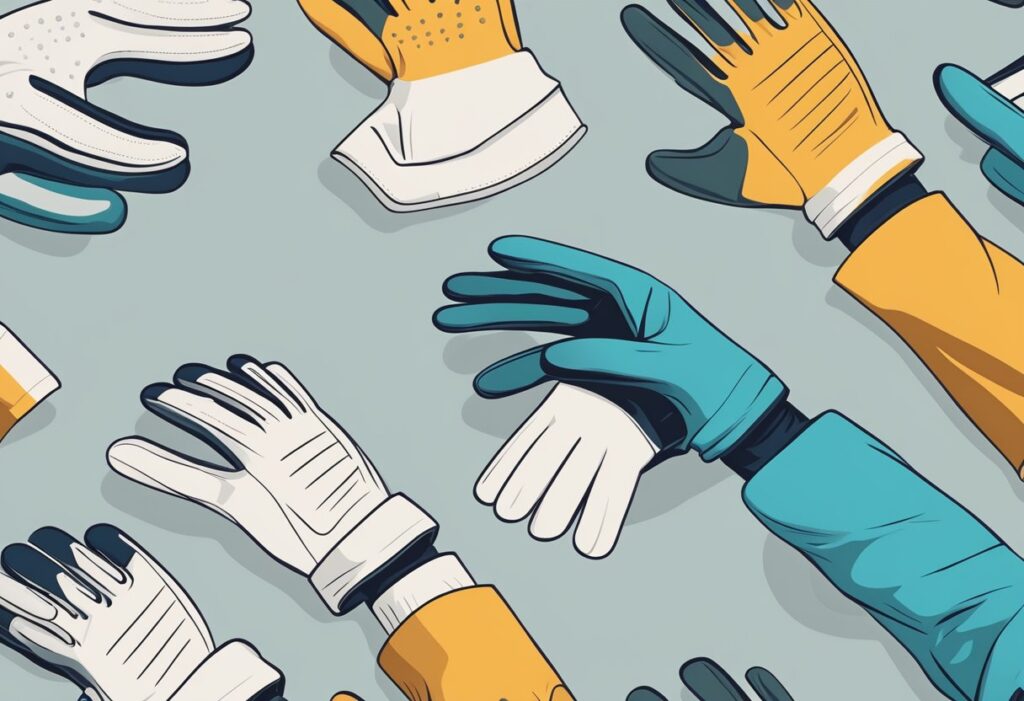
Cut-resistant gloves are essential personal protective equipment (PPE) for anyone who works with sharp objects, cutting or slicing equipment, or in settings where such injuries are prevalent. These ergonomically designed gloves protect your hands against blades, glass, and metal.
Materials And Technologies
When selecting cut-resistant gloves, It is essential to consider the materials’ impact on the environment. For example, Dyneema is known for its unique environmental benefits, but Kevlar is famous for being recyclable and positively impacting the environment. If you make ecologically conscious choices, it is possible to help create a future that uses less fossil fuels without sacrificing your safety.
Kevlar is a popular material for cut-resistant gloves because it is lightweight and provides excellent cut resistance. Dyneema, on the other hand, is a synthetic material that is stronger than steel and offers superior cut resistance. Stainless steel and Spectra are also commonly used in cut-resistant gloves due to their high cut resistance. Glass fiber is another material used in cut-resistant gloves. Still, it is less durable than other materials.
In addition to the materials used, different technologies enhance the performance of cut-resistant gloves. For example, some gloves are coated with nitrile to improve grip and abrasion resistance, and others are reinforced with steel fibers to increase cut resistance.
Cut-Resistance Levels And Standards
Cut-resistant gloves are rated based on their cut-resistance level, which measures up to the cutting force needed to sever the material. The most commonly used standards for cut-resistant gloves are EN388 and the American National Standards Institute (ANSI).
EN388 rates gloves from 1 (very little resistance to cutting) to 5 (extreme resistance to cutting). ANSI rated gloves on a scale of A1 to A9, with A9 being the highest level of cut resistance. It is important to note that these standards are not interchangeable, and a glove rated highly on one standard may perform poorly on the other.
ISO 13997 is another standard used to evaluate the cut resistance of gloves. This standard employs a straight blade and measures the force to cut through a material sample.
Understanding the materials and technologies used in cut-resistant gloves and the different cut-resistance levels and standards is not just essential but also empowering. This knowledge can help ensure the right glove for the job and boost confidence in your safety measures.
Best Cut-Resistant Gloves
When it comes to protecting your hands from sharp objects, cut-resistant gloves are a versatile and essential tool. Amazon’s selection of cut-resistant gloves is vast, but not all are equally effective. In this section, we’ll explore the top 5 cut-resistant gloves available on Amazon, each with its unique features and benefits.
Schwer ProGuard Highest Level Cut Resistant Work Gloves PR3326
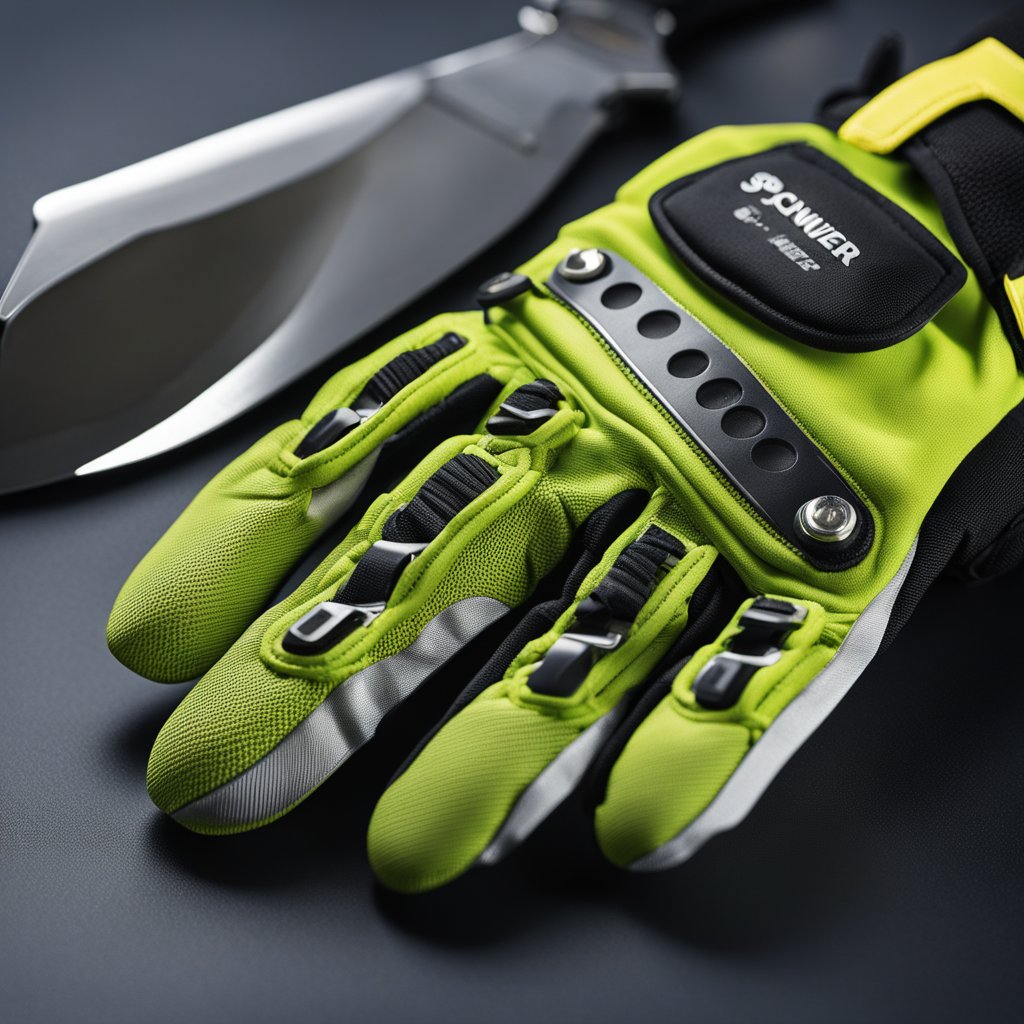
The first product on our list is the Schwer ProGuard Highest Level Cut Resistant Work Gloves PR3326. These gloves offer extreme protection with ANSI A9 cut resistance and a reinforced thumb. They are also non-slip, breathable, and touch-screen compatible. They are available in black and come in pairs.
NoCry Cut Resistant Work Gloves
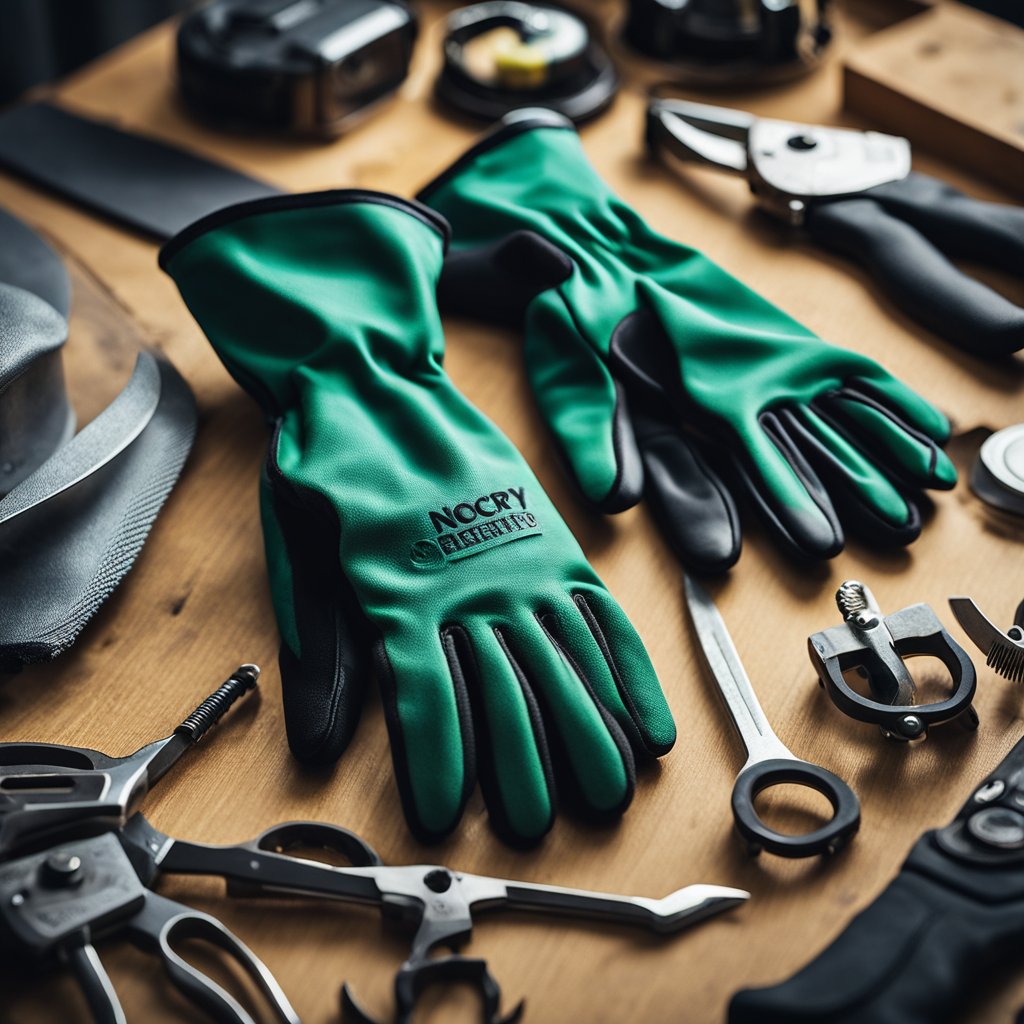
Our second product, the NoCry Cut Resistant Work Gloves for Women and Men, offers level 5 protection and is designed with reinforced fingers. These gloves are not only comfortable and ambidextrous but also 100% food grade, making them perfect for kitchen use. They come in a soothing grey color and are sold in pairs.
THOMEN Cut Resistant Gloves
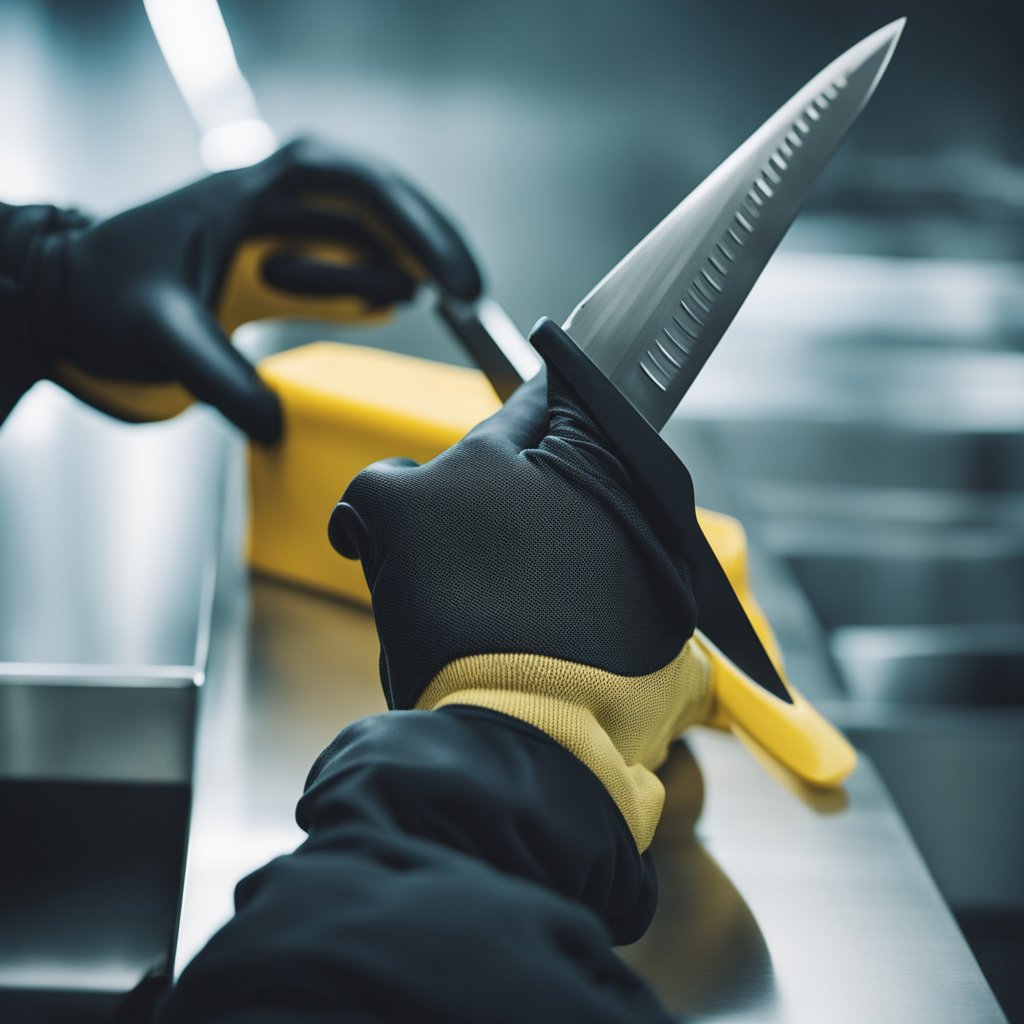
The third product on our list, the THOMEN Cut Resistant Gloves, offers level 5 protection and is made from comfortable, long-lasting materials. These gloves are perfect for a range of tasks, from kitchen work to meat cutting, wood carving, and mandolin slicing. They come in a pack of 4, with two medium and two large sizes, ensuring a secure fit for all users.
G & F 77100 M Cut-resistant Glove
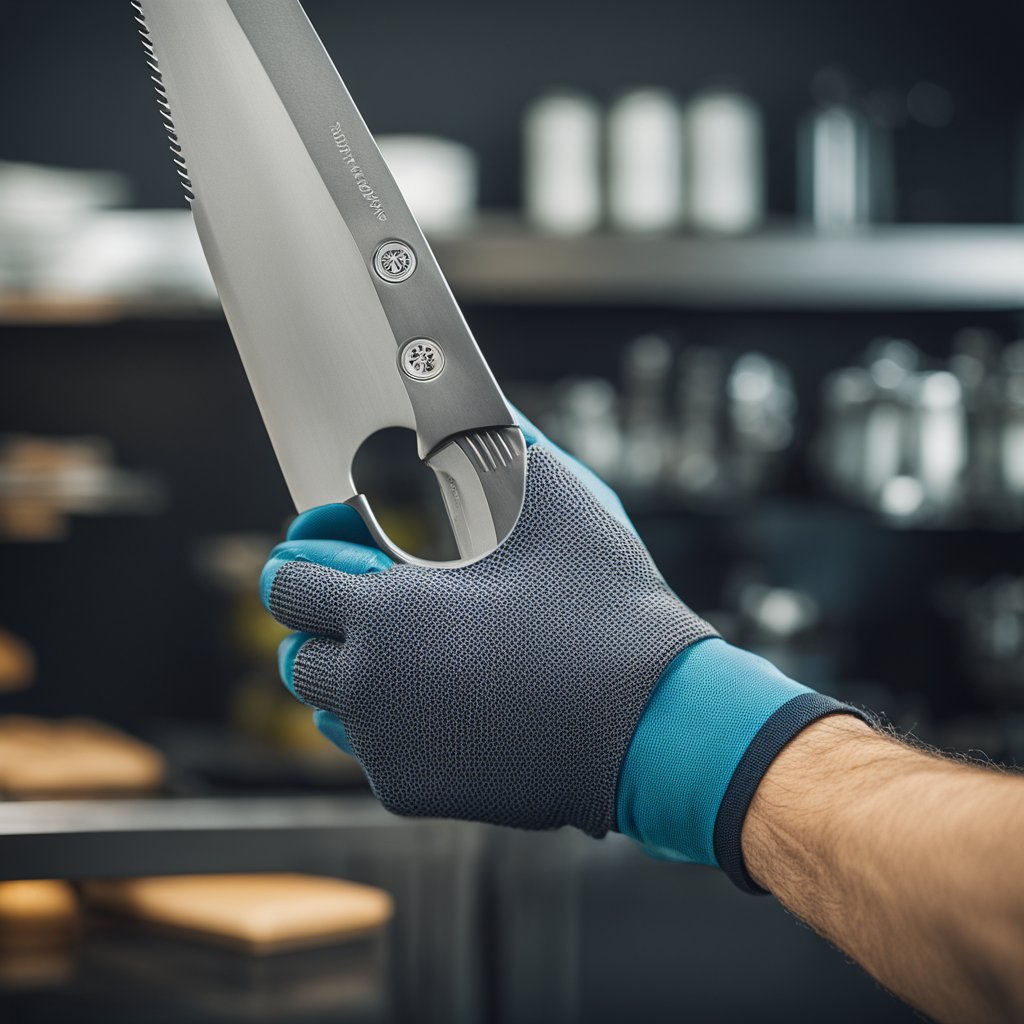
The G & F 77100 M Cut-resistant Glove is the fourth product on our list. These gloves are ambidextrous and should not snap when sliced. They are also heat-resistant and non-slip, making them perfect for kitchen use or construction work. These gloves come in a pair and are machine washable.
Dowellife Cut-Resistant Gloves
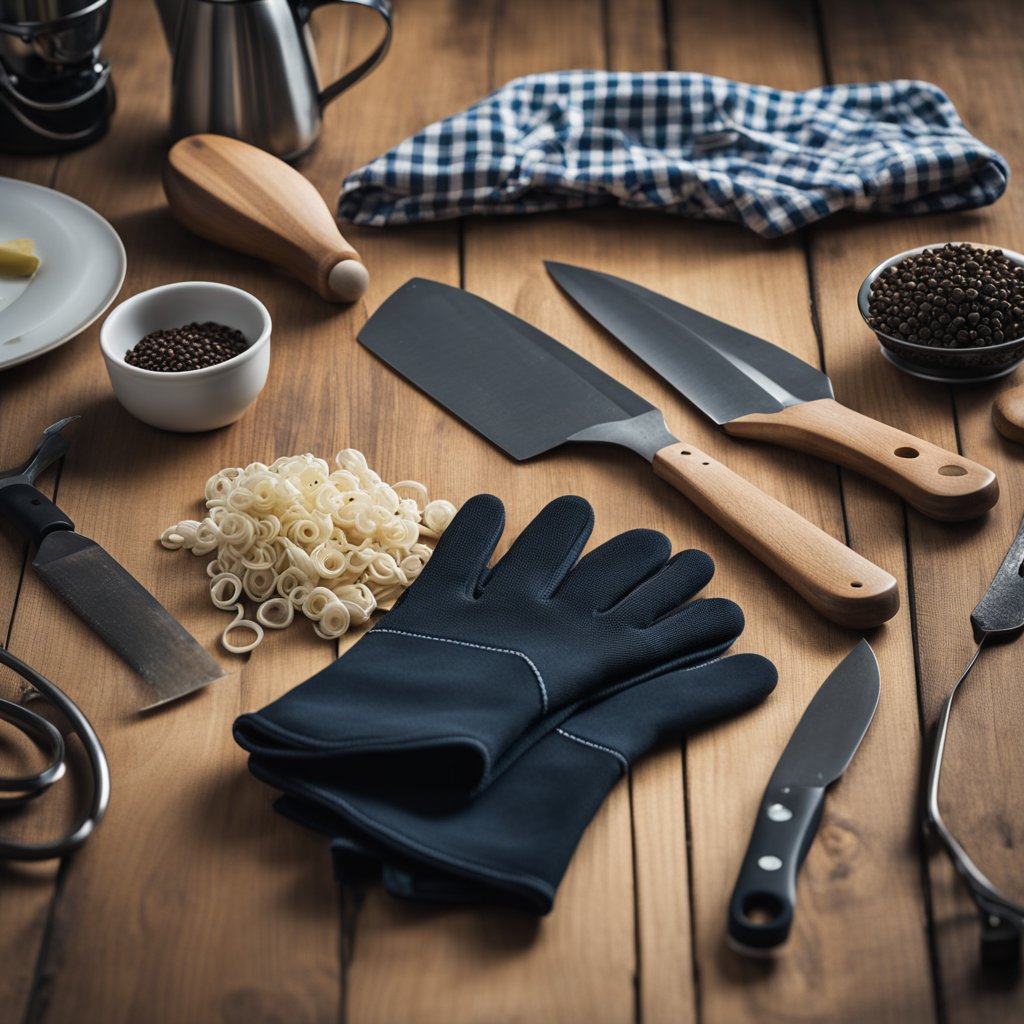
These Dowellife Cut-Resistant Gloves round out our assortment of products. They offer level 5 protection and are made with high-performance materials and high-elastic nylon. They are perfect for use in the kitchen or for woodworking, gardening, and other tasks that involve sharp objects. These gloves come in a pair and are available in grey.
Overall, these cut-resistant gloves are the best options available on Amazon. They offer excellent protection, and the high-quality materials used to make them provide both longevity and comfort. Whether working in the kitchen or performing construction work, these gloves keep your hands safe.
Selecting The Right Gloves For The Job
As a professional in your field, your expertise significantly impacts finding the best cut-resistant gloves. From understanding industry-specific hazards to evaluating glove features and enhancements, your knowledge and skills can help protect you and your colleagues from hand injuries and accidents.
Industry-Specific Considerations
Different industries have unique safety hazards that require specific types of protective gloves. For example, workers in the kitchen may need comfortable gloves that have a good grip and allow for agility and flexibility to handle sharp knives and hot surfaces. Meanwhile, workers in construction, carpentry, and welding may require gloves that offer puncture resistance, heat resistance, and touchscreen compatibility to protect against nails and hot materials and allow for device use. Understanding and addressing these industry-specific needs in glove selection can make you feel more understood and catered to in your work environment.
Glove Features And Enhancements
Glove features and enhancements can also be crucial in selecting suitable cut-resistant gloves. Some gloves have safety features, such as reinforced palms and fingertips, which provide extra protection in high-risk areas. Others are designed to withstand punctures, offering additional safety in environments with sharp objects. Touchscreen-compatible gloves can also benefit workers who need to use electronic devices while wearing gloves, ensuring they can stay connected without compromising safety.
Safety And Protection
Ultimately, the primary goal of selecting cut-resistant gloves is to protect your hands from harm caused. Reduced dexterity and difficulty with safe work performance might result from too loose or tight gloves. Finding gloves that fit well and provide adequate protection against accidental cuts or punctures is essential.
By considering industry-specific hazards, glove features and enhancements, and safety and protection, you can find gloves that offer the right balance of comfort, grip, flexibility, and resistance to hazards. This process should leave you feeling reassured and at ease, knowing you’ve taken the necessary steps to protect yourself.
Comfort And Dexterity
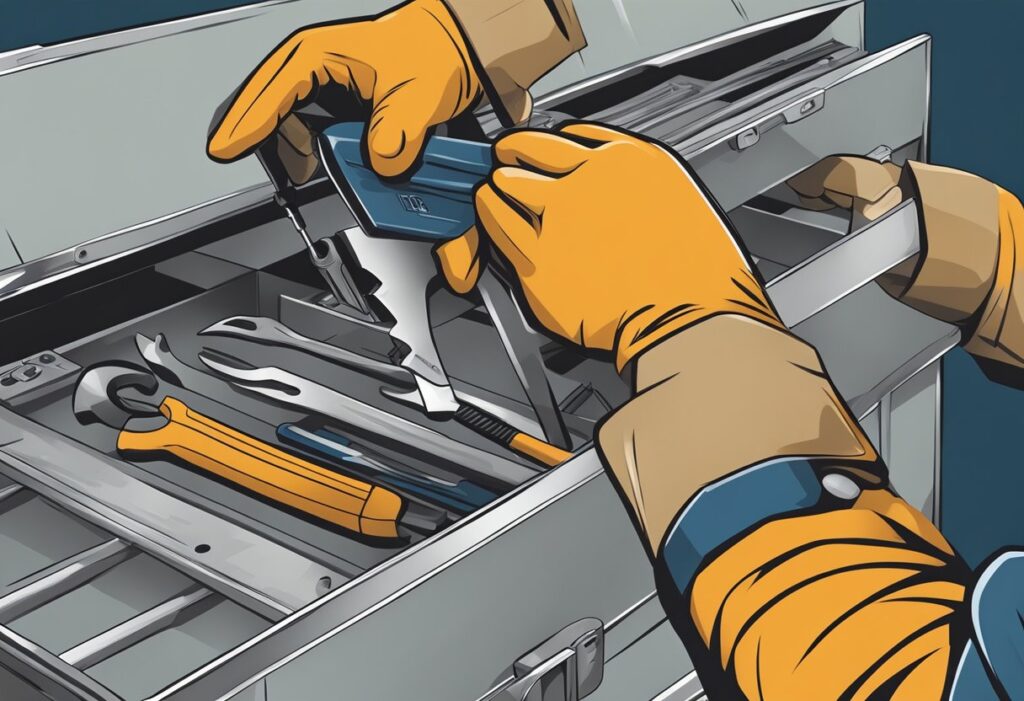
Experience comfort and agility with cut-resistant gloves. These gloves protect your hands from cuts, punctures, and abrasions and provide a comfortable and elegant fit. Comfort and fit are not just about convenience but also play a crucial role in ensuring workplace safety. Knowing your hands are safe allows you to work efficiently and enhances your confidence and peace of mind. This peace of mind is crucial to workplace security, so you won’t have to worry about hurting your hands while you work.
Ergonomics And Fit
One of the most critical factors contributing to cut-resistant gloves’ comfort and dexterity is their ergonomics and fit. Gloves that fit well are handcrafted with meticulous utmost care and accuracy to guarantee complete relaxation. If your employment requires you to wear gloves for extended periods, these are the gloves for you. Too tight or loose gloves can cause hand fatigue and reduce dexterity.
Material Flexibility And Breathability
The materials used to construct cut-resistant gloves also significantly affect their comfort and dexterity. Gloves made from flexible and breathable materials such as spandex, synthetic fibers, and nylon are more comfortable to wear and provide good dexterity. These materials are also lightweight, which reduces hand fatigue.
Gloves designed to be ambidextrous are also more comfortable to wear. They can be worn on either hand, reducing the need to purchase separate gloves for left- and right-handed workers.
The comfort and agility of cut-resistant gloves are essential when selecting suitable gloves for your job. Ergonomics, fit, and materials are all important considerations when choosing gloves. By selecting comfortable gloves with good skill levels, workers can increase their productivity and reduce the risk of hand fatigue and injury.
Practical Applications
Food Preparation And Kitchen Use
Cut-resistant gloves are essential for chefs and home cooks who regularly use sharp knives, mandolines, and graters. These gloves provide extra protection against cuts and injuries while preparing food. They are also an excellent option for those new to cooking and may need to improve their knife skills.
When choosing cut-resistant gloves for kitchen use, looking for food-safe gloves that provide a good grip is essential. Some gloves are designed explicitly for oyster shucking, which requires a high level of cut resistance. Also, be sure to get gloves that are gentle to keep clean.
Construction And Carpentry
Cut-resistant gloves are also commonly used in construction and carpentry. Workers who handle sharp tools and machinery are at risk of cuts and injuries. Cut-resistant gloves provide extra protection and can help prevent injuries on the job.
When choosing cut-resistant gloves for construction use, it is essential to look for durable gloves that provide a good grip. Some gloves are specifically designed for wood carving and offer high cut resistance. It is also necessary to choose comfortable gloves that allow for good talent.
DIY And Home Improvement
Cut-resistant gloves are also helpful for DIY and home improvement projects. Whether working on a home renovation project or doing yard work, cut-resistant gloves can help prevent injuries. They are instrumental when working with sharp tools and machinery.
When choosing cut-resistant gloves for DIY use, it is essential to look for durable gloves that provide a good grip. Some gloves are specifically designed for construction use and offer high cut resistance. It is also necessary to choose comfortable gloves that allow for good talent.
Overall, cut-resistant gloves are an essential protective gear for anyone who works with sharp objects or machinery. When choosing cut-resistant gloves, consider the level of cut resistance, safety, performance, and comfort.
Maintenance And Care
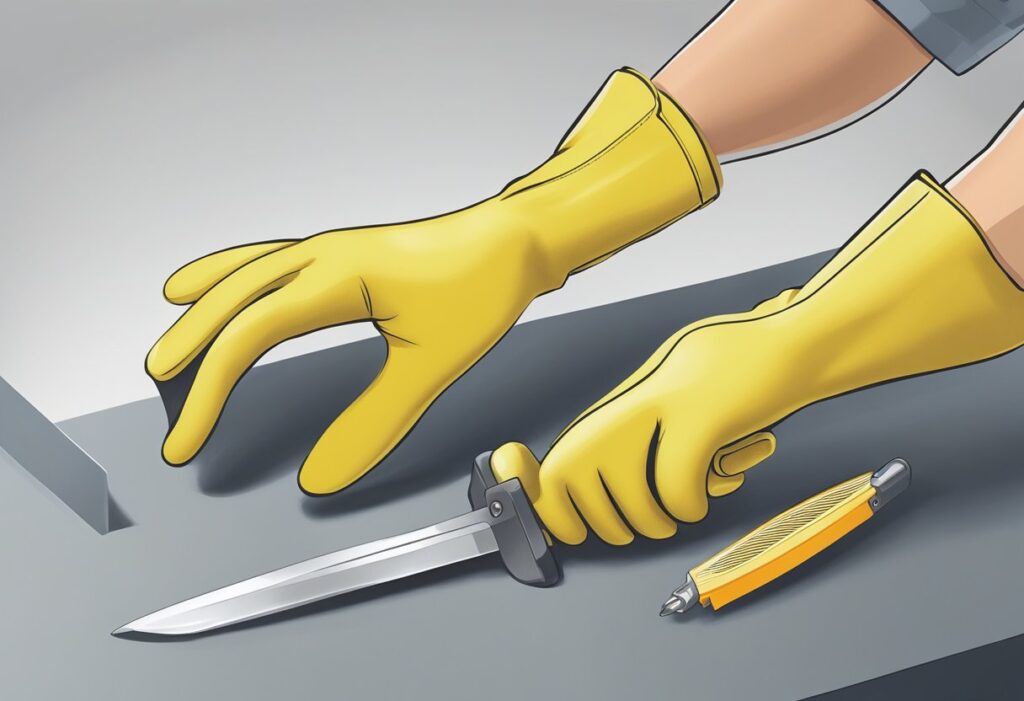
Cleaning And Storage
The durability of cut-resistant gloves depends on how well you take care of them. Cleaning and maintaining the gloves routinely will keep them in the best possible shape and increase their living time. The most practical choice would be a pair of machine-washable gloves. Launder in a cold water machine using a gentle detergent. You can let them air dry if you like, but you can also use a dryer on low heat.
When washing gloves that can’t be machine washed, use gentle soap and cold water to clean them by hand. Never use bleach or boiling water to keep the gloves in pristine condition. After cleaning, it’s essential to store the gloves correctly to ensure they last as long as possible.
Lifespan And Replacement
Cut-resistant gloves have a limited lifespan and must be worn or damaged; Someone must fix them right now. Several factors affect how long gloves last, including how often you use them, the kind of labor you do, and the gloves’ quality. With regular use, cut-resistant gloves can last up to six months.
Checking gloves for holes or frayed edges is an excellent way to keep them in good condition. If the gloves are damaged, The user’s safety depends on their prompt replacement. Replacing them is also essential if they lose their cut-resistant properties or become less reliable.
To sum up, cut-resistant gloves will last longer and work better if you take good care of them. To keep them in good condition and avoid damage, clean them often and store them properly. It is also essential to replace them when they become worn or damaged to ensure the user’s safety.
Buying Guide
When buying cut-resistant gloves, consider a few things. This buying guide will give you the information you need to make an informed decision.
Assessing Your Needs
Before you buy cut-resistant gloves, assess your needs. Consider the type of work you will be doing and the level of protection required. This information lets you select the gloves that best suit your needs.
Comparing Brands And Prices
Several cut-resistant gloves are available in the market, each with unique features and price points. Some popular brands include NoCry Cut Resistant Gloves, Dowellife Cut Resistant Gloves, and Ansell. When comparing brands, it is essential to consider factors such as satisfaction, performance standards, and credibility.
Certifications And Compliance
When purchasing cut-resistant gloves, it’s essential to know they’re up to code regarding safety. The EN388 standard evaluates the gloves’ cut, rip, puncture, and abrasion resistance. The American National Standards Institute (ANSI) is another source for cut resistance ratings. Furthermore, before using gloves in the food business, ensure they comply with FDA regulations.
There is no one-size-fits-all solution when choosing suitable cut-resistant gloves. By assessing your needs, comparing brands and prices, and ensuring certifications and compliance, you can make an informed decision and select suitable gloves.
Conclusion
Selecting suitable cut-resistant gloves ensures safety and protection in various industries. With the appropriate gloves, workers can minimize the risk of injuries caused by sharp objects and blades.
Considerations like size cut resistance, and material type is essential when choosing cut-resistant gloves. The American National Standards Institute (ANSI) ranks the level of cut resistance from A1 to A9, with a higher number indicating that the glove material could withstand a greater cutting force when tested.
Gloves that prevent cuts include stainless steel, Dyneema, and Kevlar. Kevlar is lightweight and durable, while Dyneema is known for its high tensile strength. Stainless steel’s excellent cut resistance makes it a popular choice.
It is also essential to select gloves that fit correctly to ensure maximum protection. Wearing excessively loose or tight gloves might negatively impact your safety and comfort.
Overall, selecting the best cut-resistant gloves requires an in-depth understanding of specific working conditions and needs. Considering the abovementioned factors, workers can choose gloves that provide the necessary protection and comfort for their job.
Frequently Asked Questions
What Is The Highest Level Of Cut Resistance In Gloves Currently Available?
The highest level of cut resistance in gloves currently available is A9 under the ANSI/ISEA norm, which offers the maximum defense against slash injuries. However, gloves with this cut resistance are typically used in industrial settings and may only be necessary for some applications.
How Do Level 5 Cut-Resistant Gloves Compare To Other Levels?
Level 5 cut-resistant gloves provide high protection against cuts but are not the highest level available. Gloves with lower cut-resistant levels may still provide adequate protection for specific tasks. When selecting cut-resistant gloves, it is essential to consider the particular needs of the task.
What Materials Are Best For Cut-Resistant Gloves Used In Kitchen Environments?
Cut-resistant gloves used in kitchen environments commonly have Kevlar, Spectra, or mesh composed of stainless steel as their primary material. These materials provide high protection against cuts and are easy to clean and maintain.
Which Cut-Resistant Gloves Are Suitable For Those Who Work In The Construction Industry?
Construction workers should consider gloves with high cut resistance, such as those with an A5 or higher rating under the ANSI/ISEA standard. Made from Kevlar or Spectra fiber materials, gloves may be well-suited for construction work.
Are There Specific Cut-Resistant Gloves Preferred By Butchers For Meat Processing?
Butchers may prefer gloves made from materials such as stainless steel mesh or Spectra fiber, as these materials provide a high level of protection against cuts and are easy to clean and maintain. However, the specific type of glove preferred may vary depending on the individual butcher’s needs.
Can Cut-Resistant Gloves Be Effective In Preventing Injuries During Sheet Metal Work?
Cut-resistant gloves can effectively prevent injuries during sheet metal work, mainly if they are highly resistant to cuts. This job might require gloves from rugged materials like Kevlar or Spectra fiber. However, it is essential to note that no glove can provide 100% protection against all kinds of injuries, and always make sure to take the necessary safety measures.

